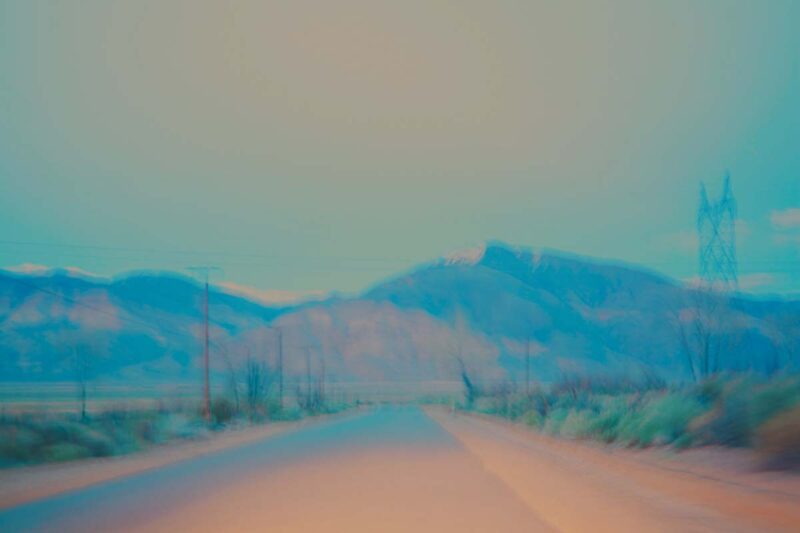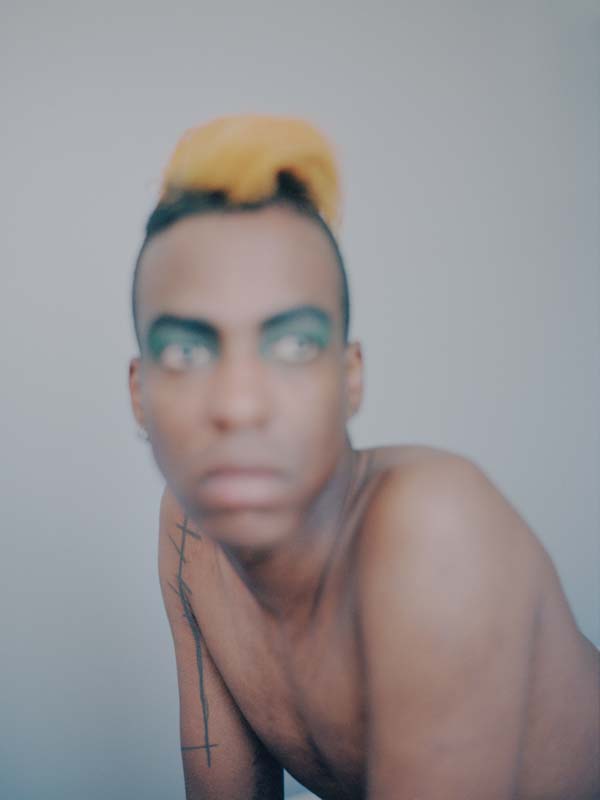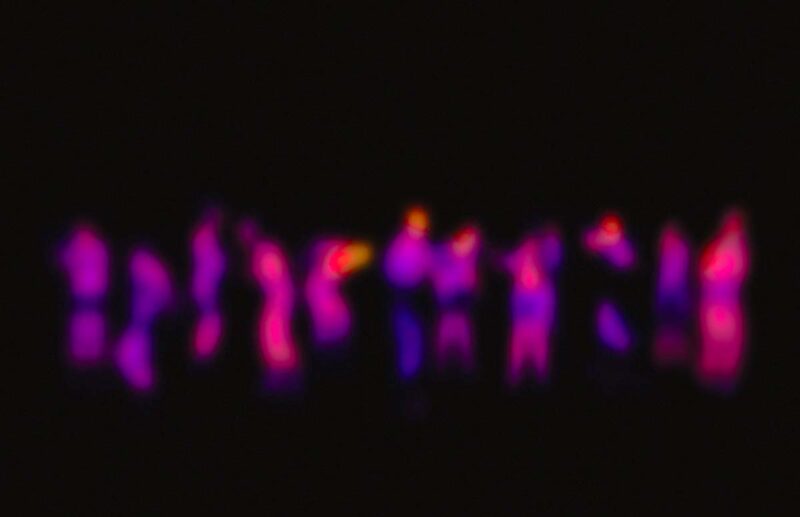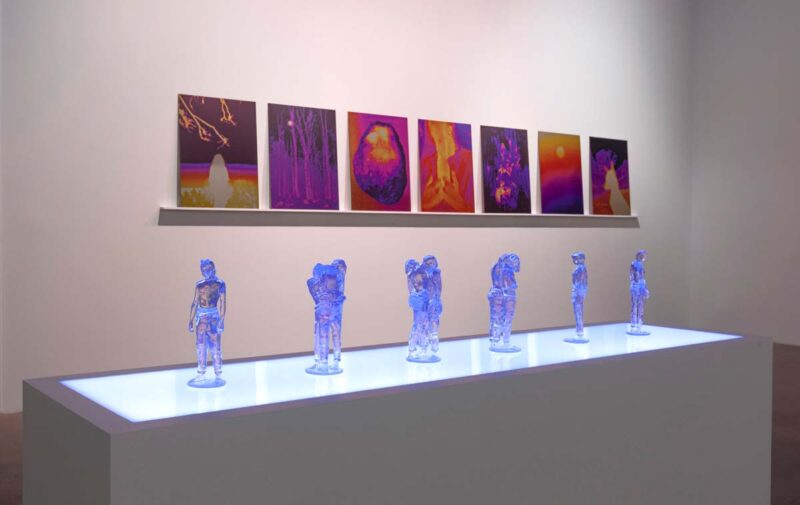[Summer 2024]
by Jessica Ragazzini
[EXCERPT]
Outre. In the French-language dictionary, the word outre has several definitions. First, as a common noun, outre is an animal pelt sewn into a bag and used as a receptacle. As an adverb, it designates going beyond something. Finally, as a preposition, it signifies an addition. The works by the photographer SMITH in the exhibition Outre at VOX embody all these aspects of the word.
An interview recorded between the curator, Thérèse St-Gelais, and SMITH opens the exhibition. The voices are edited onto a looped video that shows SMITH inside an Airbus A310 Zero G. This work, produced in partnership with the Observatoire de l’Espace, shows them in the process of forsaking their status of earthbound animal and experiencing weightlessness for several seconds. They redescend into the gravitational system, and then leave it again. In the interview, SMITH and St-Gelais discuss the term “trans” as a notion about going beyond.
The exhibition brings together several bodies of work, displayed as a photographic atlas of human and nonhuman beings; it includes the series Spectrographies (2012–16), made with a thermal camera, which brought SMITH’s work to the international stage. Here, the body becomes simply a skin with many forms, textures, heat levels, and colours. SMITH uses image technologies to stretch the biological possibilities, establishing an alternative way to look at the concept of the living being by highlighting the heat generated by the body.
In front of these gradations from purple to yellow stand small statues made of translucent glass that help, assist, support, and interbreed with them. The philosopher Maurice Merleau-Ponty envisaged the body as a way of being-in-the-world – to use his term – through our senses; similarly, SMITH tests the intersubjectivity of the sensing body, which exists only through its affective connections with the other and with its environment. The thermal camera allows them to play with the limits of legibility, to go beyond the individual anthropomorphic schema and think of the being in its relationship with the world – with the living and non-living.
Similarly, the project Dami (the mistresses) (2022), consists of works made on brushed aluminum and placed in burned-wood frames, grouping together plants that look ghostlike, blurry, monochrome. The plants, resembling fluid forms, are almost unidentifiable. Dami, Spectrographies, and the above-mentioned series of sculptures draw upon the post-humanist current of thought that places humans, plants, and animals at the threshold of equality. Bodies and creatures dialogue together in the virtuality of their almost-translucent forms, as if they were com- parable beings, made of the same texture and energy. In addition, the wood frames of Dami bring a three-dimensional materiality – full, dark, solid – that interacts with that of the transparent statues.
In the exhibition, the transitions among the works’ different techniques, in which each element resonates with the whole, produces a visit that is fluid and offers a vector for deep reflection about social and bodily interactions. The collaboration between St-Gelais and SMITH results in a sensitive probing of the place that individuals occupy within (or with) their environments. The pastel colours of Löyly (Sub Limis) (2010) refine the bodies that harmoniously meld with backgrounds, objects, settings, landscapes, animals, and people. Presented unframed – attached directly to the wall by nails – and with a refined minimalist aesthetic, the images are deployed infinitely in VOX’s galleries, like a mapping of human expression in all states: loving, gentle, suffering, violent, sad, solitary, destructive, united, and more.
The exhibition ends with a projection of moving bodies and photographs of animals, interlaced beings, faces, and hands, all captured by a thermal camera. Like passengers on the parabolic flight of the Airbus A310 Zero G, visitors to VOX journey to beyond the apprehension of intersubjectivity and then return to their point of departure. They experience a sense of the closeness between their reality and that of the human and non-human subjects photographed, sculpted, and filmed. Translated by Käthe Roth
—
Jessica Ragazzini is a lecturer at the Université du Québec en Outaouais, coordinator of Galerie UQO, and independent curator. Her studies in philosophy, arts, and art history are put to use in her trans-disciplinary research that bears on the tension between the reified body and the humanized object in photography. The author of numerous articles and talks, she has co-edited sections on representations of changing bodies for Les Cahiers du Musée national d’art moderne, Écrans, Ex_situ, and Images Re-vues.
—
[ Complete issue, in print and digital version, available here: Ciel variable 126 – TRAJECTORIES ]
[ Complete article, in digital version, available here: SMITH, Outre — Jessica Ragazzini
]





